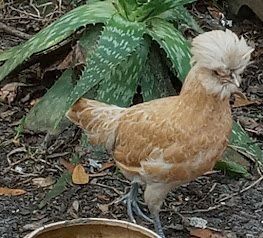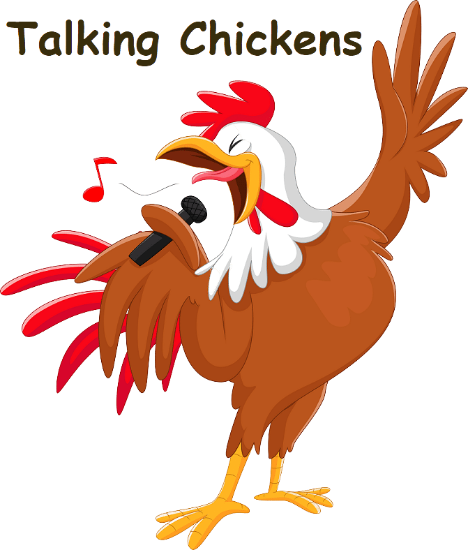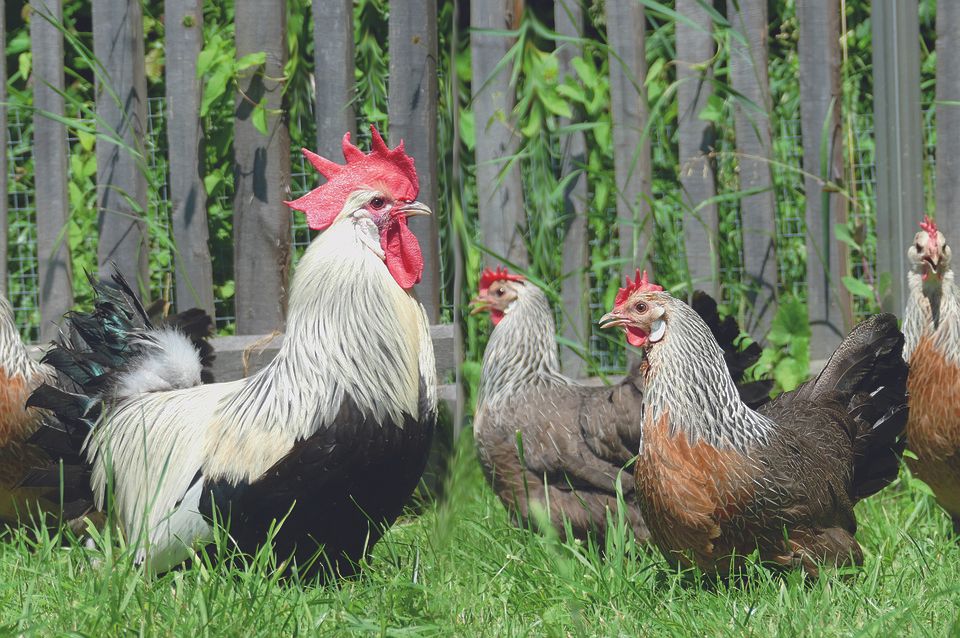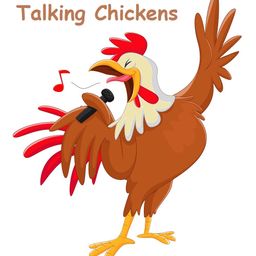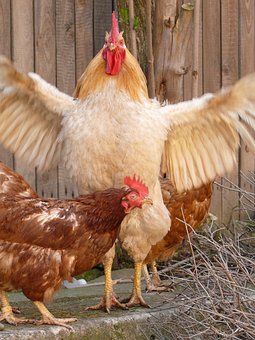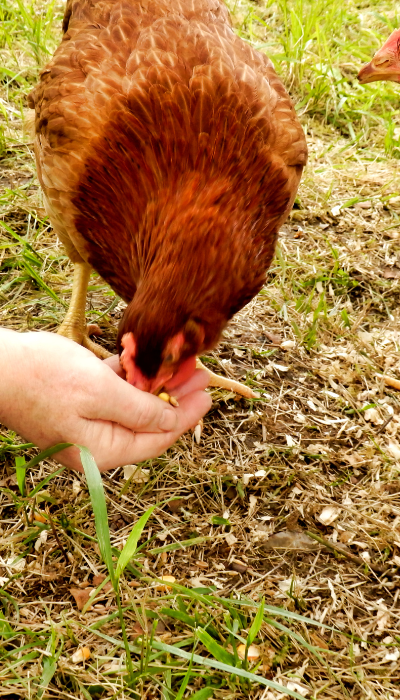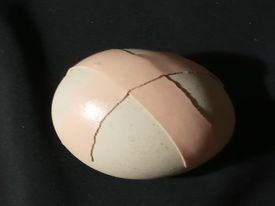Liane S. Page: After a few years of dealing with chickens, which are hens and roosters when adults and pullets and cockerels up to one year, it is in most cases fairly ease to differentiate, however for a newbie, which I once was, it was the deepest desire to learn and to know immediately which is which. So I went on the hunt to find the answers and suddenly it clicked.
As soon as they are a day or two old and only in that timeframe, can you tell on the little wings if it is a rooster or a hen, or the professionals can sex vent the chicks, but that is too dangerous of hurting the chicks if you don't know what your are doing. So we tend to be looking at the wings first.
The male has a one way wing shaped sort of curved line or concave meaning one length and the female chick has a wing like the bow ( { ) from a bow and arrow as reference or a capital B the wings have two different lengths.
But so far I have never been wrong by seeing the comb and waddles turn red very quickly while the females are not, that is always my indicator, plus the extreme difference in body size when the exact same breed and birthdate, also the legs, my goodness they are so much longer and thicker. Also, it seems that, unless a game bird, their necks are always longer and the beak thicker and more shaped. Plus as chicks the roosters are a little less cute. Of course, that changes as adult than they are the most gorgeous creatures. Also, it seems that mostly the roosters are the first to sit on the highest possible spot in the brooder and after only two weeks they could fly out of the brooder so beware!
Below please find author Benjamin Janicki's article about his experience with determining rooster vs. hen. Thank you.
Benjamin Janicki
A lot of our questions are people asking about the sex of their young birds, and I think this graphic does a good job of illustrating the key difference between males and females.
- Females have rounded feathers in the tail and lower back that point generally straight toward the tail.
- Males have pointed feathers in the tail and lower back that curve downward. The pointed feathers in the tail of a male are called sickle feathers.
- The pointed feathers in the lower back of a male are called saddle feathers. One error in the graphic: the lower back on a hen is called the cushion, not the saddle.
- Do not look to the size of the comb and wattles to determine the sex of your young birds, especially if you have multiple breeds.
- Different breeds can have radically different comb and wattle sizes such that females of one breed with have a much bigger comb than the males of another breed.
- This can even vary among individuals within the same breed if they’re young.
- Focus on the feathers of the tail and lower back. That’s the only guarantee.
- One exception is the Sebright bantam. It’s the only breed where the males are completely “hen-feathered”. On those you’ll just have to wait longer and judge the difference based on size and the comb and wattles.
Finally, this may be a bit pedantic, but it’s at least useful knowledge; they aren’t technically a hen or a rooster until they’re a year of age. Young males and females are referred to as pullets and cockerels respectively within the poultry world. (I am sorry to say that I don’t know who made the original graphic, but if you know, feel free to credit them in the comments). Hope this is helpful!

Another similar graphic, this time from above. These birds are Rhode Island Reds, which have almost the same color for males and female. Even with the same color, you can see the difference in feathers in the lower back.

Liz Salter: This helps...the tail feathers just changed over the last week....I'm thinking I may have named him right....Christian Grey...called her Chrissy...guess its Christian now. The photo below is a true female!

Benjamin Janicki: This is still a female. The feathers are just worn out. These tail and back feathers are still wide, rounded, and straight like on a female. They are not narrow, curved, and pointed like a male. This is a female.
Liz Salter: Really??? You don't know how happy this makes me!!! I was taking care of this ladies in the summer. Only to find out that one of the people I was helping out, his mother was going to cull them...for no reason!! So the other person I was helping, told me to take some for all the help I did. This one was the first one I rescued!!! I was just away for a week and came home to her rear feathers changing to this!!! So I'm guessing she is a young bird?? Here is a pic of what I saved her from.


Liz Salter: This is their home now!! Took my grandson's toy shed and changed it into a coop. Complete with a skylight!!

The Art of Doing Stuff: Do hens or roosters grow tail feathers first?
Fresh Eggs Daily: One method that does work on some breeds is wing sexing. But it's a very time-sensitive method of sexing chicks. Wing sexing can only be done within the first 48 hours after the chick hatches. Hens' wing feathers are two different lengths while roosters' are the same length.
Tail Sexing Chicks: Do hens or roosters grow tail feathers first?
The chicks who develop tail feathers first are female. According to tail sexing, I also had 3 roosters and 3 hens on my hands.
Brooke Bishop: Could you make one for frizzles? Do they make a "sexing guide" for frizzles? Those birds are so hard for me to tell!
Benjamin Janicki: This would definitely be trickier. I don’t have any good photos of frizzles, but in principal, the individual feathers would still be the same; they would simply curl back on themselves. So the females would have wider, rounded back and tail feathers that curl backward, and the males would have thinner, pointed tail feathers that curl back.
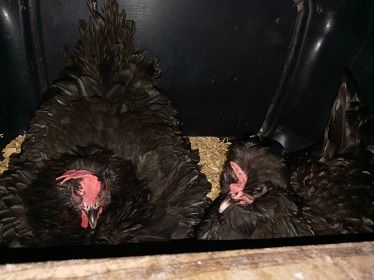
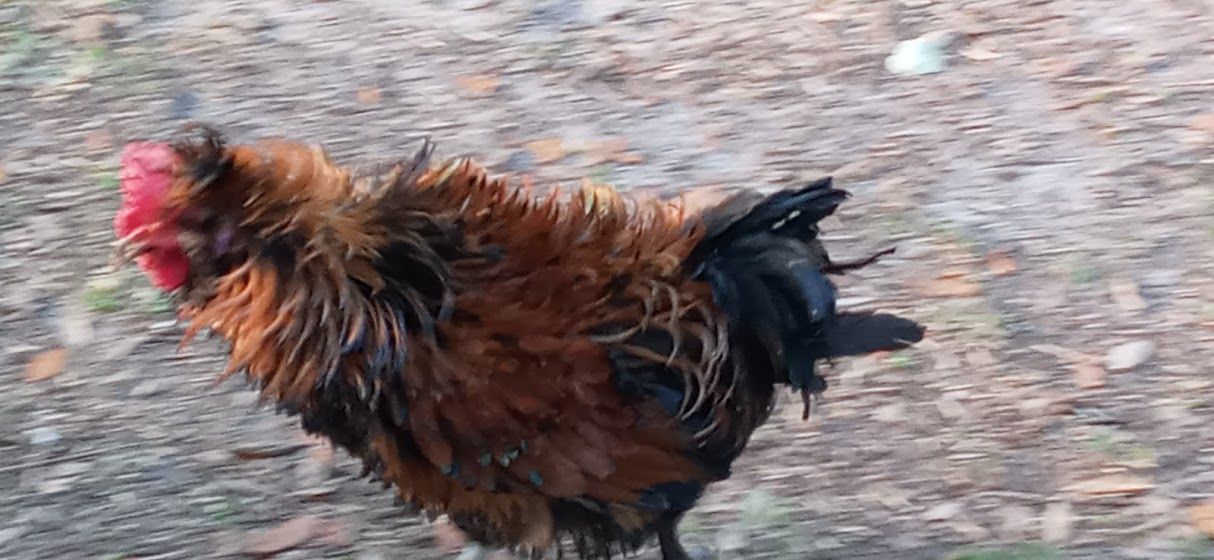
Thank you for reading our article and we hope you can now differentiate, but if there should still be any doubt, please feel free to sign up here and send us your photos or video that we can help you better.
Which ever they are male or female, they all deserve and love Chick Sticks!
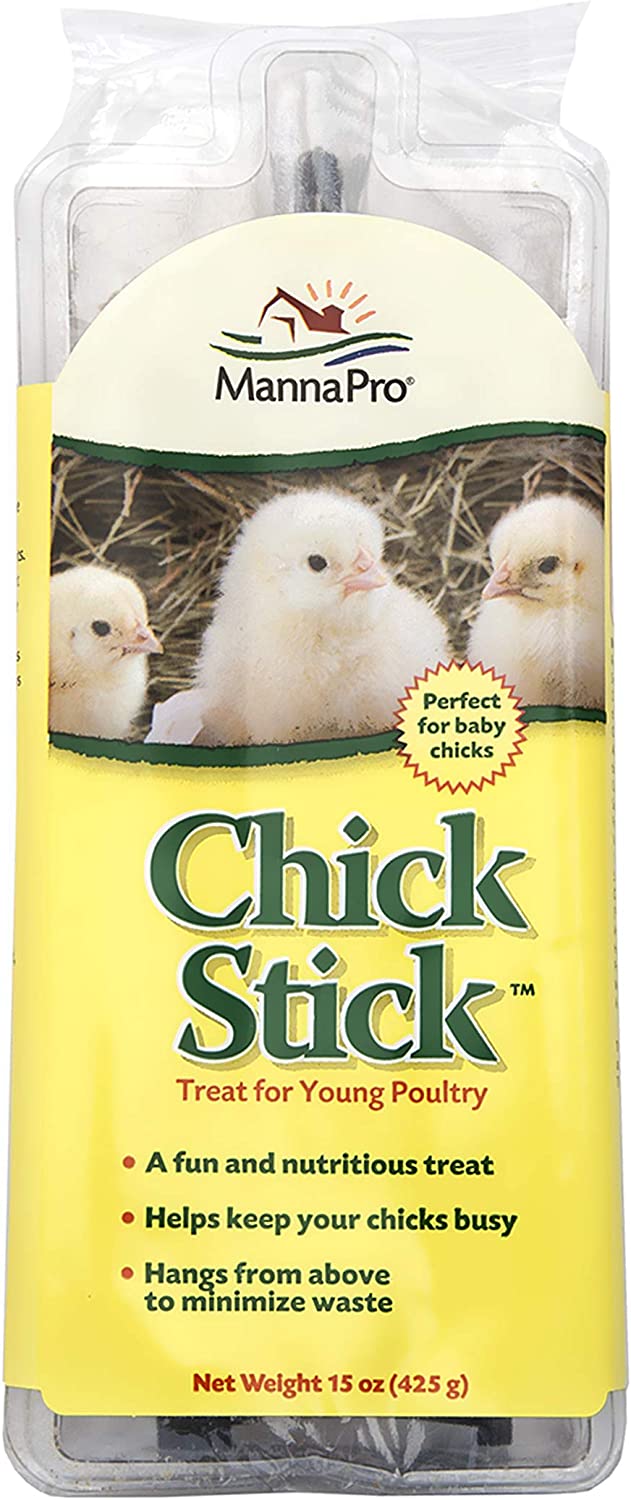
Chick Supplies Treat | Chick Brooder Chick Stick | Chicken Coop Accessories | Chick Starter Kit | 15 oz
Manna Pro - $12.40
Thank you for any purchases on our site from our affiliate Amazon of which we will receive a small commission that supports our Mission.
Have a happy chick checking day! Your friend,
Liane
For all other chicken needs click below
